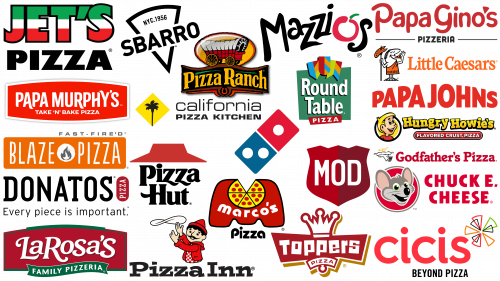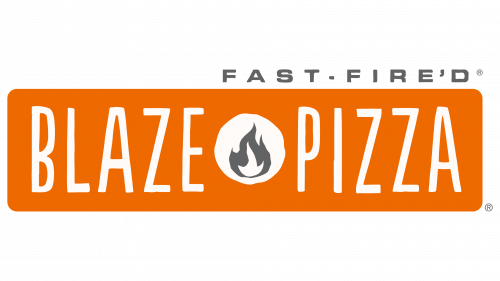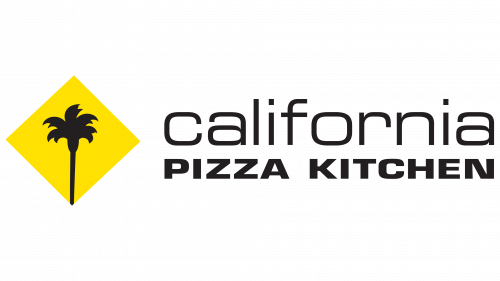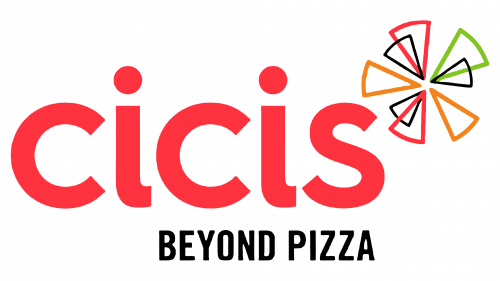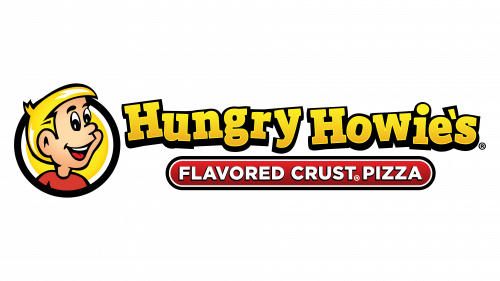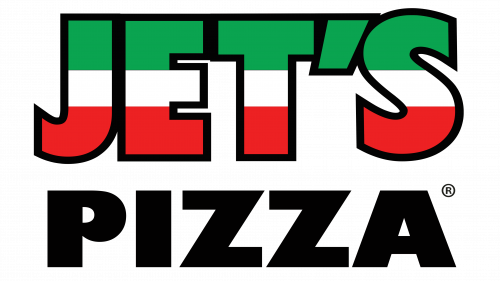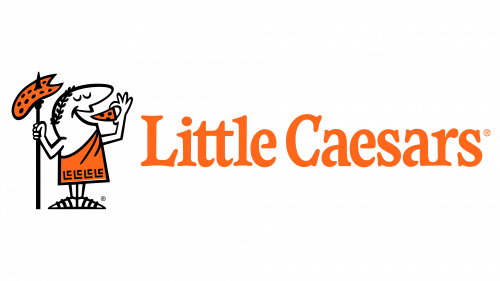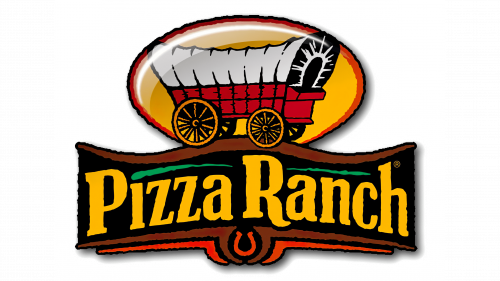Numerous pizza brands vie for consumer attention, each boasting its unique blend of flavors, toppings, and crust styles. Notable names such as Domino’s and Pizza Hut easily come to mind for many, but local establishments also carve out their niche markets. These businesses focus on offering distinct varieties to cater to specific customer preferences.
Pizza enjoys a perennial spot among the world’s most beloved foods. Annual estimates suggest that people globally consume approximately 5 billion pizzas, each customized with diverse toppings and styles. The undeniable popularity of this dish has led to intense competition among pizza providers.
In such a competitive arena, brand identity is crucial in capturing customer loyalty. Pizza companies invest significantly in developing a compelling image through many marketing strategies. This includes promotional campaigns and the creation of recognizable and inviting brand insignia.
Visual elements like logos become particularly vital in this context. These symbols serve as a quick reference point for customers, instantly conveying the essence of a brand. Whether the bold red, white, and blue colors or intricate designs hinting at Italian origins, each element is meticulously chosen to evoke specific emotions and associations.
One can gain insights into effective branding and marketing strategies by examining various iconic symbols in the pizza industry. This knowledge can benefit consumers looking to make informed choices and business owners aiming to carve out their unique space in this bustling market.
The most recognizable pizza brand logos today
Pizzeria businesses around the world have developed a variety of logos, each carefully crafted to embody the ethos of their brand and target audience. Despite the variety of designs, these symbols share several common motifs and themes.
The logos are often dominated by bright hues. These bright colors are eye-catching and resonate with youth, allowing these brands to remain fresh and relevant in the eyes of the younger generation. It is not uncommon for pizza brands to incorporate elements of their names into their visual identity, allowing consumers to easily recall their favorite establishment.
If you delve into the study of many pizzeria logos, you will notice that these symbols are not just an aesthetic choice. They reflect the company’s core values, its history, and the specific market it is targeting. While some logos may hint at traditional Italian roots, depicting wood-fired ovens or chefs kneading dough, others use urban or modern motifs, targeting a contemporary, fast-changing customer.
Blaze Pizza
Emerging in 2011 under the leadership of Rick and Elise Wetzel of Wetzel’s Pretzel’s fame, Blaze Pizza quickly set its sights on the pizza industry. Borrowing from Chipotle’s expertise, the brand has become a proponent of an order-to-order strategy, allowing diners to customize their pizza with each ingredient in mind. Its reputation attracted many pizza lovers and attracted the attention of high-profile investors, including basketball icon LeBron James.
The unique offering that sets Blaze Pizza apart from its competitors is the unprecedented freedom for customers. They can create their own pizzas, choosing each topping, sauce, and cheese to create a flavor profile that meets their taste preferences.
One of the most well-known aspects of Blaze Pizza is its formidable oven. The high-quality ovens provide efficient service and ensure that every slice of pizza is flawless in flavor and texture. The logo, in warm orange colors, radiates warmth, passion, and innovation. The sleek sans-serif font gives it a modern look. At the same time, the central motif of a blazing flame indicates the fast baking process, ensuring that each pizza is baked to perfection in record time.
California Pizza Kitchen
Founded in 1985, California Pizza Kitchen has carved out a unique niche in the casual dining sector, specializing primarily in California-style pizza. The brand pioneered the culinary art form, striving to offer diners across the United States a fresh take on traditional pizza.
The restaurant chain’s brand identity is embodied in a memorable logo, carefully crafted with a modern twist. The emblem uses bright colors and vibrant typography to create an eye-catching image. The choice of yellow diamond brings to mind sunshine – a subtle hint of California’s sunny climate. At the same time, the inclusion of a palm tree image in the logo pays homage to the state’s iconic flora.
The font used in the logo is noteworthy for its bold, assertive characteristics. It conveys a sense of self-confidence and modernity, which aligns well with the brand’s forward-thinking ethos. The integration of such visual elements allows the logo to remain intriguing and resonate with the lifestyle and cultural characteristics of California.
Chuck E. Cheese
Chuck E. Cheese originated in 1977 as a unique combination of pizza restaurant and family entertainment center. Today, its logo stands out prominently in the pantheon of American pizza brands.
The dual nature of Chuck E. Cheese – both as a food service establishment and an entertainment center – is well reflected in its iconic logo. The brightly colored letters blend seamlessly with the playful image of the brand’s mascot. This character is not just a decorative element but plays a key role in the brand’s marketing strategy aimed at attracting the attention of young people.
The combination of the cheerful mascot with a bright sans-serif font creates an impression that stays in the memory for a long time. This thoughtful design strategy allows the brand to remain memorable, especially among families looking for delicious pizza and exciting entertainment under one roof.
CiCi’s Pizza
Often referred to as “CiCi’s” by fans, this food service establishment is a fusion of Italian and American culinary traditions, particularly pizza. With a presence in nearly 23 states, CiCi’s Pizza has established itself as a renowned buffet-style food company.
The innovative method of serving food sets CiCi’s Pizza apart from many of its peers. Instead of waiting for freshly made pizza to be delivered to the table, CiCi’s diners are able to select their desired slices from pre-prepared options immediately after paying the bill.
The logo, rendered in an eye-catching orange color, exudes energy and zest. It is complemented by the tagline “Beyond Pizza,” signifying that the brand offers an experience that goes beyond eating pizza. The emblem, originally designed using interlocking triangular shapes, is a subtle allusion to the variety of pizza options offered at the establishment.
Domino’s
Domino’s, a globally recognized pizza brand, has adopted the prevailing trend of minimalist logo design. Since its inception in 1960, this multinational restaurant chain has expanded exponentially, consolidating its position in the international market. By the end of 2018, according to impressive figures, Domino’s was present in 83 countries and had 15,000 outlets.
The brand’s emblem, designed in a combination of blue and red colors, is a stylized domino figure. In this visual image, the number of dots on a traditional domino is skillfully taken into account: one dot on the red part and a couple of dots on the blue part. Such design solutions are not just aesthetic decisions; they echo the brand’s identity and historical roots.
The choice of the company name has an interesting backstory. It was not the result of a high-level marketing brainstorm but the brainchild of a conscientious employee, Jim Kennedy. He suggested the name after an incident involving pizza delivery, inspired by a classic game piece. This terminology blends seamlessly with the company’s logo and resembles the packaging in which the pizza is delivered.
Donatos Pizza
Founded in 1963 by Jim Groth, Donatos Pizza has carved a niche for itself as a franchised pizza delivery service operating in 11 states across the United States. The founder’s commitment to unparalleled customer service was established, and his vision was to create a brand that emphasized treating every customer with respect. This customer-centric principle is reflected in the brand’s succinct tagline, “Every Detail Matters,” which succinctly expresses the company’s core principle.
Recently, the company has presented a new logo designed to modernize it while remaining true to its core principles. The new visual identity is a modern word mark in a sans serif font. This font choice emphasizes the brand’s unwavering commitment to professionalism and focus on the modern customer who values quality and efficiency.
The use of red color for the word “Pizza” in the logo allows to refer the brand to quick service restaurants, emphasizing its belonging to the sphere of fast but quality food. Through thoughtful design and color schemes, Donatos Pizza successfully communicates its focus on high-quality customer service and professional integrity.
Godfather’s Pizza
In 1973, Godfather’s Pizza established a strong niche in the pizza industry. Today, the company has approximately 453 specialty outlets across the United States and operates in major Minit Mart and Speedway malls, expanding its reach.
The brand’s nostalgia-inducing emblem is indelibly imprinted on the minds of visitors. The emblem is in the vibrant red color often associated with pizzerias and conveys the brand’s bright and passionate approach to its offerings. The emblem depicts a cartoon hand confidently serving a tray of appetizing freshly made pizza.
With its vibrant branding, Godfather’s Pizza subtly combines retro charm with the appeal of freshly prepared delicacies. Widespread distribution and unique branding make Godfather’s Pizza a recognizable and respected brand in a vast number of pizzerias.
Hungry Howie’s
Founded in 1973, Hungry Howie’s Pizza & Subs has become the 11th most important pizza chain in the United States, with more than 550 locations nationwide. In addition to traditional pizza, this brand diversifies its menu with offerings such as calzone subs and specialty pizzas with flavorful crusts.
Hungry Howie’s unique offering, the flavorful crust pizza, has a special place in the company’s logo, which is highlighted by a dynamic font in vibrant shades of yellow and blue. These colors are not just a design choice, they carry an air of energy and zest designed for young customers.
In addition to the lively word mark, the brand’s mascot is an energetic young boy. This young character brings an element of relatability, allowing children coming into the establishment to see a familiar face, further enhancing the family-friendly atmosphere Hungry Howie’s strives to create.
Jet’s Pizza
Emerging in a Detroit suburb in 1978, Jet’s Pizza has steadily climbed the ranks to become one of the best-known pizza brands in the United States. The company’s history is rooted in Michigan, where it was founded by the Jet’s brothers, John and Eugene. While Michigan remains the company’s primary operating base, Jet’s Pizza’s influence has spread beyond its borders, with a presence in 19 states and 390 franchises.
The company’s name is a tribute to its founders, ensuring that the legacy of John and Eugene Jetts resonates in every slice served.
The Jet’s Pizza logo perfectly blends a modern aesthetic with Italian motifs. Noticeably different from the previous all-red wordmark, the current logo pays homage to Italy, a country synonymous with pizza. The brand name “Jet’s” is adorned in the bright hues of the Italian flag – green, white, and red – while the word “Pizza” is highlighted in a strict black font.
LaRosa’s Pizza
LaRosa’s Pizzerias, founded in 1954 by a consortium of business partners, was originally called Papa Gino’s. Due to the acquisition of the name by another business, a rebranding effort was initiated. Today, LaRosa’s is a well-known name in the pizza industry, serving various communities across the United States.
The logo, designed in a banner format, includes a complex serif font adorned with brightly colored decorative elements. This stylish presentation is not just aesthetics; it serves a functional purpose, instantly attracting attention. The choice of red, white, and green in the color palette subtly highlights the Italian culinary influence behind the menu, appealing to the senses and introducing the culture.
A strategically important element of the brand’s communication efforts is the tagline “Family Pizzeria.” It is a tagline and a critical element of the brand identity. It succinctly conveys LaRosa’s core marketing message: This is where families, the main target audience, can come together and enjoy a meal in a cozy environment.
Little Caesars
Emerging in the United States in 1959, Little Caesars has successfully carved out a niche for itself in the global pizza arena. This revered brand ranks third in total sales within the United States, just behind industry giants Domino’s and Pizza Hut.
The intriguing history of the brand’s name stems from a personal anecdote. “Little Caesars” is believed to have come from co-founder Marian Ilitch’s affectionate reference to her partner Mike. This personal approach gives the brand a unique backstory and adds an element of human connection that resonates with many.
In the competitive fast food sector, distinctive brand imagery is paramount, and Little Caesars did not disappoint. The company’s logo prominently features a playful Julius Caesar, animatedly doling out a slice of pizza slung on a spear. The predominant use of bright orange hues in the visual elements and typography exudes a lively spirit.
The strategic use of mascots, as in the case of Little Caesars, provides brands with a distinct personality. Such characters are not only memorable but also form a deeper relationship between the brand and the customer.
Marco’s Pizza
Marco’s Pizza has a prominent place in American pizza chains, and its name is a tribute to founder Pasquale Giammarco. Founded in 1978, the brand has been widely recognized and praised. With hundreds of locations across the U.S., Marco’s Pizza has further enhanced its reputation by being ranked No. 10 by Pizza Today in 2016.
Marco’s Pizza utilizes a combination mark that reflects a playful yet refined approach to food preparation and service. The centerpiece of the design is a large, rounded letter “M” that represents the brand name “Marco’s.” Within this letter is an artful illustration of a pizza with a missing slice, adding subtle culinary context. Beneath this eye-catching graphic is the word “pizza,” completing the entire logo design.
Modern typography and vibrant colors contribute to the logo’s eye-catching appeal and leave a lasting impression. Through its visual style, Marco’s Pizza conveys its commitment to providing quality and vibrancy to its restaurants.
Mazzio’s
Founded in 1961, Mazzio’s has expanded its presence in Italian cuisine as a separate brand and as a single entity overseeing several Italian-themed establishments. One of the company’s notable ventures is Mazzio’s Pizza Company, which originated as a humble pizzeria.
Over time, the company has expanded its culinary lineup and now boasts a diverse menu featuring a wide range of Italian specialties. From classic sandwiches and hearty pasta dishes to specialty pizzas and unique dishes introduced from time to time, Mazzio’s is a haven for Italian food lovers.
In branding, logos play a crucial role, and Mazzio’s does not disappoint in this regard. Their logo is both quirky and memorable. The font used in the emblem radiates energy: the letters are positioned at different angles, which gives dynamism to the entire design.
An astute observation reveals that the letter “o” in Mazzio’s is not just a letter. It is creatively shaped to resemble a tomato, a must-have pizza ingredient.
MOD Pizza
Entering the market in 2008, MOD Pizza has quickly gained notoriety despite being a relatively new entrant in the realm of well-known pizza brands. Originally from Washington, D.C., the company’s exponential growth is evident: in just a few years, it has opened more than 500 outlets across the U.S. and Canada.
The acronym “MOD” reflects the brand’s core philosophy of “Made on Demand.” This distinctive feature emphasizes the brand’s commitment to exactly matching the tastes and preferences of its customers. A visit to a MOD outlet allows you to immerse yourself in the holiday atmosphere. Guests can take an active part in the creation of their own pizza, watching the assembly process firsthand and having the opportunity to change the ingredients so that each slice suits their taste.
The visual embodiment of this concept is the MOD logo. It exudes self-confidence: strict white letters are set against a shield background. The shield motif is not a random design element. It symbolizes the brand’s unwavering commitment to quality and frank approach to communicating with customers, guaranteeing them unwavering taste and authentic taste of dishes.
Papa Gino’s
Founded in 1961 in Massachusetts, Papa Gino’s has established itself as a niche pizzeria in the United States specializing in thin-crust pizza, appetizers, and salads. While the brand is not as widely known as some of the larger chains, its presence has reached approximately 81 locations spread across various regions.
The brand originally began its culinary journey under the name Piece O’ Pizza. The rebranding was done to create a warmer and friendlier atmosphere, leading to the current name, Papa Gino’s. The brand’s name, which features prominently in the logo, has a whimsical twist: the apostrophe in the word “Gino’s” resembles a slice of pizza. This design element not only emphasizes the brand’s core proposition but also gives it a playful and modern feel.
Papa John’s
Founded in 1984, Papa John’s has become a formidable name in the American pizza arena and currently ranks as the fourth leading delivery chain in the country. Although the company’s roots are in the United States, its operations are not confined to national borders. The company has successfully extended its culinary services to some 49 countries around the world, cementing its place as the third most important pizza delivery company.
The origin of the brand name – “Papa John’s” – is deeply personal and rooted in history. It pays homage to the company’s founder, John Schnatter. The story behind the brand’s creation is inspiring: Schnatter started his pizza venture by installing an oven in a rather unconventional space – a modest broom closet in the back of his father’s tavern.
Papa John’s chose a wordmark that combines simplicity and whimsy. The glowing red hue is eye-catching and symbolizes the passion and warmth closely associated with the brand’s values. The font is executed in a skillful manner, giving the impression that the letters playfully protrude from the surface. This clever design makes the brand instantly recognizable and gives it the zest and enthusiasm of Papa John’s restaurants.
Papa Murphy’s
Founded in 1995 by merging two well-known pizzerias, Murphy’s Pizza and Papa Aldo’s Pizza, Papa Murphy’s has become a formidable name in the pizza industry. This merger not only resulted in a new name but also a colossal chain with around 1,300 outlets across the United States, UAE, and Canada. This massive expansion did not go unnoticed, and the brand subsequently cemented its position as the fifth-largest pizza chain in the US. It currently operates under the umbrella of MTY Food Group.
Observing pizza branding, there is a tendency toward playful and youthful designs, but Papa Murphy’s signature style deviates from this beaten path. The minimalist yet impactful design strategy emphasizes their approach to branding. The logo is based on a strict white background contrasted with a bold red banner that prominently features the brand’s name. It is then complemented by the tagline “Take ‘n’ Bake Pizza,” signifying the brand’s unique selling proposition.
The choice of typography plays a key role in expressing the essence of the brand. The typeface has a contemporary style, but the subtle artistic accents present in it create a sense of creativity and grace. The typeface reflects a balance of modern sophistication and artisanal craftsmanship, which reflects the brand’s ethos of offering modern pizza solutions with a touch of tradition.
Pizza Hut
Founded in 1958, Pizza Hut stands alongside giants like Domino’s in the pizza industry with its deep roots. Known for its signature pan pizzas, the company offers a wide range of dishes to suit all tastes, from crispy breadsticks and desserts to savory pastas.
Pizza Hut’s scale and influence is undeniable. The chain has approximately 17,639 outlets, making it the most widely distributed pizza brand in terms of number of locations.
When examining Pizza Hut’s corporate identity, a peculiar branding detail catches the eye. One can notice subtle differences in the brand logo depending on the geographical region. However, amidst these regional nuances, one distinctive feature remains – the symbolic roof of the “hut.” This design, unchanged across all regions, serves a dual purpose. On the one hand, it echoes the brand terminology, and on the other hand, it reflects the architectural aesthetics of numerous Pizza Hut outlets, many of which have just such a roof design.
Pizza Inn
Originating in 1958, Pizza Inn has one of the most vintage logos among pizzerias. Originating in Texas, the brand has since expanded to more than 250 locations across the United States. In addition to its core business, the company has spawned another quick-service restaurant concept, Pie Five Pizza, known for making pizza in just five minutes.
The Pizza Inn logo is not just an emblem but a reflection of the brand’s personality. It includes a whimsical word mark, complemented by an eye-catching figure – a man in a pointy red hat, deftly spinning pizza dough above his head.
The overall visual impact of the logo aims to convey the spirit of the brand, rooted in tradition, while catering to the preferences of younger generations.
Pizza Ranch
Founded in 1981, Pizza Ranch has carved a niche for itself in the fast food industry, particularly in the Midwestern United States. With a diverse culinary repertoire that includes different types of pizzas, juicy chicken dishes, and fresh salad bars, the chain has earned loyal customers at its more than 200 locations nationwide.
What sets Pizza Ranch apart is its founding principle based on Christian principles. The company’s vision emphasizes “glorifying God,” which is not just a statement but evidence of a deep commitment to certain values and beliefs.
If one delves into the company’s branding elements, one will notice a deliberate attempt to reflect its rich history and connection to Midwestern traditions. Pizza Ranch’s logo stands out primarily due to the glowing yellow word mark set against a banner background that evokes classic western design aesthetics. This design choice emphasizes the company’s deep roots. The inclusion of a horseshoe in the design is a subtle but effective reminder of the company’s Midwest roots.
Round Table Pizza
Known mostly in the western United States, Round Table Pizza is a testament to the evolution of pizza businesses. The distinctive feature of this organization is its two-format operation. The regular restaurant offers a wide range of pizzas, refreshing salads, and a variety of beverages. On the other hand, Clubhouse gives the restaurant a higher status by turning it into an entertainment center. This segment expands the culinary offerings to include craft beer and incorporates leisure elements such as games for children and sports programs aimed at a broader audience.
For its milestone 60th anniversary, Round Table Pizza undertook a comprehensive rebranding. The rebranding was not superficial; it focused on creating a story, resulting in the slogan “Round Table Pizza.” Adopting a symbolic logo further reinforced that story. The emblem, adorned with brightly colored shields, subtly alludes to the legendary story of King Arthur and the camaraderie of the round table.
An integral component of the rebranding is a color palette teeming with hues combined with thoughtful typography that serves a dual purpose. It embodies the essence of the brand and has an innate ability to capture the attention of potential customers, making it a visual and strategic triumph.
Sbarro
Emerging in 1956, Sbarro introduced pizza lovers to New York-style signature slices of pizza. Paying homage to founders Carmela and Gennaro Sbarro, the brand quickly rose to prominence in the Italian fast-food niche. In 2008, the company was recognized as the leading fast food company in Italian cuisine.
Sbarro’s visual presentation is a modern yet uncluttered aesthetic. A prominent triangular motif points to the company’s signature dish – a slice of pizza. This design choice captures the essence of the offering and resonates with consumers who are eager to try that particular slice.
A textual representation of the brand showcases its name highlighted in capital letters. This design choice radiates authority, emphasizing the brand’s confident position in the competitive world of fast-food restaurants.
Toppers Pizza
Since its founding in 1991, Toppers Pizza has spread its operations to different regions of the United States. Its establishment and rapid growth is attributed to the fact that the brand has a good understanding of its target audience: college students and young adults craving quick, customized pizza.
Before starting this now-popular chain, its founder gained experience and expertise working for the famous Domino’s pizza franchise. This experience undoubtedly influenced and determined the unique trajectory of Toppers Pizza’s development.
Toppers Pizza’s corporate identity is embodied in its distinctive and memorable logo. The emblem boldly represents the company’s name using strict block letters. But it is not only the boldness that attracts attention but also the playful dynamism. The letters, arranged whimsically, appear to be in motion, which gives the emblem a lively and energetic character. At the top of the logo is a crown, symbolizing excellence and perfection. This symbol is used by various businesses in different industries to signify a commitment to unrivaled quality and service.
Exploring famous pizza companies
The expanse of the American food industry proudly displays the logos of many pizza companies, each striving to create their own unique identity. Some brands have achieved universal recognition, while others are still fighting for the right to be in the spotlight. Despite all the diversity, the discerning eye can spot some commonalities in these logos.
Many logos are dominated by bright and playful fonts, often hinting at the zest and flavor of the pizza box. In addition, ingredients that are the essence of classic pizza, such as tomatoes and cheese, are often mentioned in logos, demonstrating the authenticity of the products offered.
Color schemes in logos often lean towards green, red, and white. These colors certainly reflect the Italian heritage of pizza but also emphasize the freshness of the ingredients, conjuring up images of basil leaves, juicy tomatoes, and cream cheese.
Creatively integrating the brand name into the logo design is a tactic that many pizza brands utilize. Examples include the inclusion of domino tiles in Domino’s logo and the distinctive shack structure in Pizza Hut’s logo. Such design elements not only provide instant brand recall but also reinforce the brand identity in the minds of consumers.
Start-up restaurants and catering businesses can draw inspiration from these design strategies to create a visual identity that will resonate with their audience and set them apart in a crowded marketplace.
